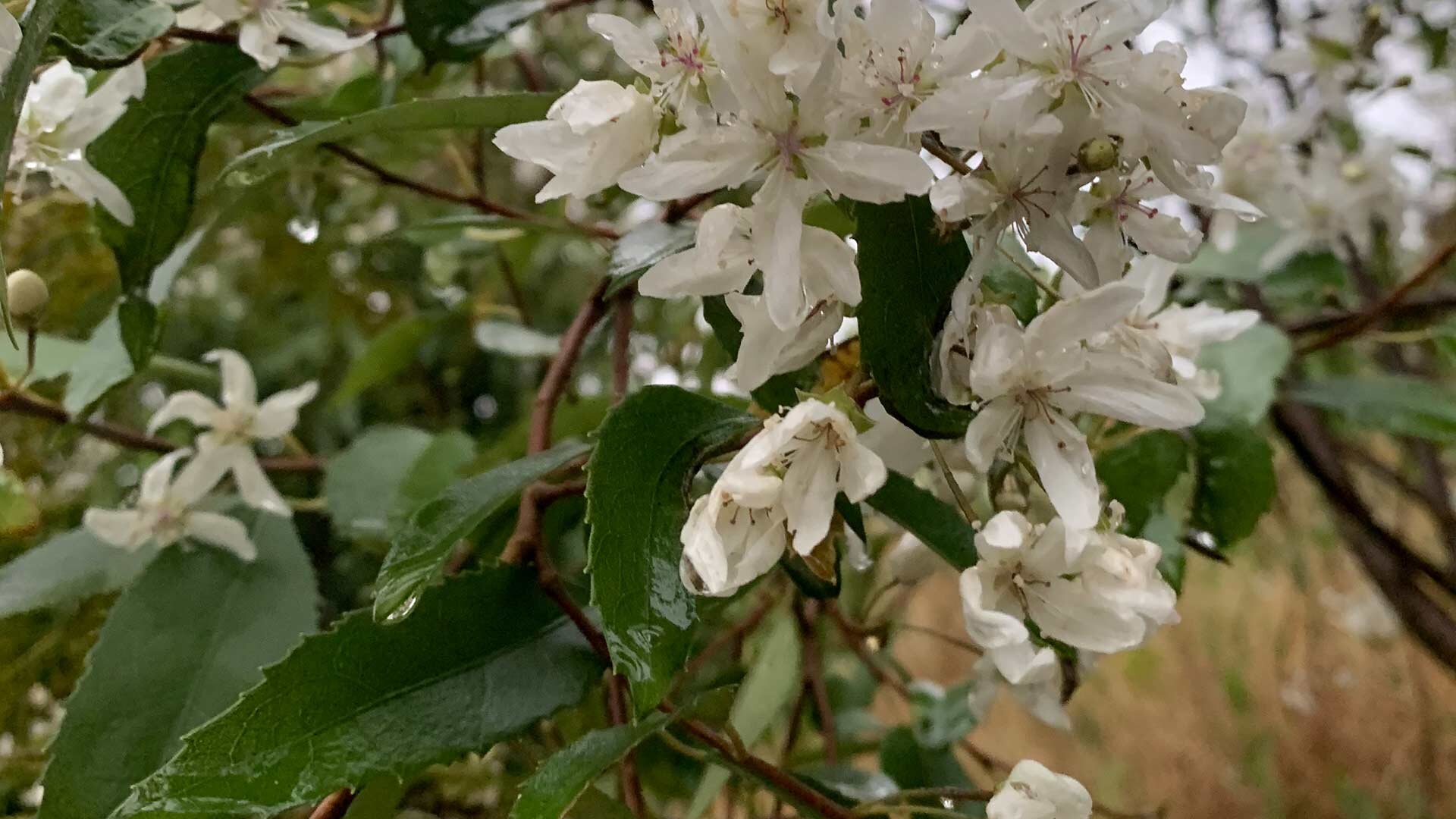ŌKU’s Herbs
All of ŌKU’s formulas are designed to show off the amazing properties of the rākau (plants) found within our ngahere (forests).
Many of these have a rich history of traditional use and ŌKU taps into this while looking at new and novel ways to use these special rākau. While Kawakawa is certainly one of our favourites here at ŌKU, we also use many others such as: Kūmarahou, Mānuka, Houhere, Akeake, Horopito, Karamū and Rewarewa.
We also use more traditional herbs to support, complement and amplify the properties of these natives.
At ŌKU we still do things the traditional way where our rākau (plants) with very few exceptions are still hand harvested. While this may be very time intensive we believe it follows our kaupapa (purpose) of how we want to be good kaitiaki (guardians) of the whenua (land).
We have a strict protocol that both we and our harvesters follow. It covers things like what they harvest, when they harvest and how they harvest, including of course how much they harvest from each rākau.
We like to think of these herbs as being even better than organic as they are grown in their natural habitat in the ngahere.

Kawakawa
Kawakawa (Piper excelsum) is a New Zealand native herb used traditionally for many different ailments. It is an amazingly versatile herb that has so much to offer. Here are some ways that it was traditionally used and also some contemporary conditions it may also assist with.
Heart tonic - Has been used traditionally to help strengthen the heart and more recently for high blood pressure as well as supporting overall circulation due to its fantastic warming properties making it perfect for poor circulation, those suffering from chilblains, etc.
Blood purifier - Has been used traditionally to treat boils and to draw toxins from the body both from internal use & as a topical poultice.
Digestive - The warming properties of Kawakawa may aid in digestion especially when suffering from indigestion, heartburn, etc.
Lung restorative - The seeds in particular may have a tonic effect on the lungs. Kawakawa has very similar properties to its cousin, pippali or long pepper plant used in traditional Ayurvedic medicine.
Analgesic - Has a mild analgesic effect similar to the Kava plant of Fiji to which it is closely related to. Has been used traditionally for tooth ache and more recently for menstrual cramps due also to its anti-spasmodic actions.
Adaptogen - May help with a restorative & strengthening action for those people under high levels of physical and emotional stress or suffering from fatigue.
Diuretic - May have a mild action to help with fluid retention and was traditionally used to support and strengthen kidney function.
Anti-inflammatory - Traditionally used for rheumatism and arthritic complaints.
Aphrodisiac - Was used traditionally by older men to renew their youthful vigour.
Topically - It was used traditionally for many different skin complaints but more recently has been shown to be a remarkable healer of the skin for conditions like eczema or other similar red inflamed conditions. It has also been shown to be helpful when massaged into inflamed or arthritic joints.

Kūmarahou
Kūmarahou (Pomaderris kumarahou) is an attractive ornamental shrub that has a beautiful yellow flower in late spring. When crushed in the hand and mixed with some water it produces a soapy lather which accounts for its name ‘gumdigger's soap’ giving you some indication of one of the many traditional uses of this remarkable plant.
Respiratory Tonic - Kūmarahou has a high content of saponins which is the ‘slippery’ constituent that made it an ideal soap alternative in the Kauri gumfields. It is this same constituent that made it the first choice traditionally when an expectorant was needed to help with clearing the lungs in coughs, colds, bronchitis or any other type of respiratory complaint that required the loosening of mucous to clear the lungs. Traditionally it was also used to treat tuberculosis and as a herb that was thought to strengthen and support the entire respiratory system.
Blood Purifier - Kūmarahou has long been traditionally used as a depurative herb which means it may help to support the body to eliminate accumulated waste products and toxins by improving the function of elimination channels such as the liver, kidneys, lymph and bowel. Through this action it may assist in a wide range of conditions that have come about from sluggish metabolism or simply less than ideal lifestyle choices over a period of time.
Skin Conditions – Kūmarahou may often help improve a wide variety of skin complaints. This can be due to many skin conditions being a result of sluggish elimination channels in the body not clearing toxins effectively. Due to its blood purifying and cleansing properties as mentioned above, Kūmarahou may help to improve and support the function of these channels.
Rheumatism and Gout - Traditionally used for both of these conditions with good success. Probably through a combination of its actions as a herb that helps with improving the elimination of toxins from the body and also as an anti-inflammatory.
Tonic Herb - The very name Tonic Herb suggests a herb that can be taken ongoing as a restorative and strengthener to the whole body. Kūmarahou was traditionally used for this very purpose. While having a strong affinity with the respiratory system, it was thought that it has many other ways it works in the body which some of have been mentioned above.

Mānuka
Mānuka (Leptospermum scoparium) is New Zealand’s most abundant native shrub, in places growing into small trees. Most famous for the honey that is made from the flower and the essential oil that is extracted from the leaf the whole plant has many wonderful properties. While being similar to Australia’s Tea Tree, New Zealand’s Mānuka is thought to have much stronger anti-microbial properties.
Natural Antibiotic - One of Mānuka’s strongest properties is how it may help with many different types of infections. It was used extensively in traditional use for a wide range of fungal infections from tinea and candida and also many different types of bacterial infections. It may be very effective in helping to combat Staph. aureus bacterial infections which have an increasingly high resistance to many antibiotics used today.
Coughs and Colds - Not only may it help with the underlying infections which have caused the cold but it also may help as a diaphoretic which helps support sweating to clear the cold from the body.
Digestive Complaints - Used traditionally as a tea substitute and as a cure for scurvy, Mānuka was thought to have a strong healing action on the digestive function. It was used for many different types of complaints including diarrhoea, irritable bowel, indigestion and colic.
Urinary Complaints - Another area where Mānuka was used extensively to help with a large number of complaints including bedwetting, incontinence and fluid retention.

Houhere
Houhere (Hoheria populnea) (and other varieties) are fast-growing endemic to NZ trees that are often compared with the North American Slippery Elm tree as it shares many of the same properties. While the bark can be used for these properties, OKU chooses to use mostly the leaves as a more sustainable and gentler harvesting method with still the same medicinal benefits.
Digestive and Respiratory Complaints - These are the two key areas of where houhere has been traditionally used. The leaf contains a high level of what we call mucilage, (is released when the raw leaf is chewed upon or the grinded or powdered leaf is mixed with water) turns into a slippery substance that is very soothing to the mucous membranes of the digestive and respiratory tract. This action is the key to how houhere may help with many complaints in these two systems.
In the respiratory system it may help with settling coughs and making them more productive and also with soothing sore throats.
In the digestive system it may help with upset and irritated digestive systems and heartburn, also with ulcers and even inflamed and spasmodic bowel complaints.

